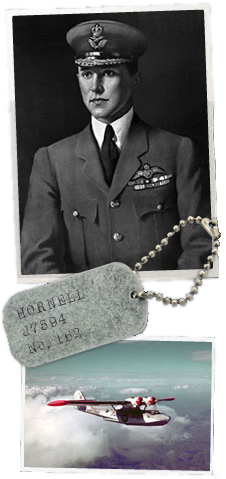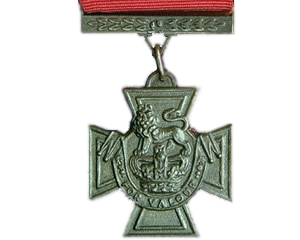William Barker
Military Life
On the Ground
In November 1914, William Barker volunteered for service with the second contingent of the Canadian Expeditionary Force (CEF), 1st Regiment, Canadian Mounted Rifles. After a short stay at Camp Sewell, Manitoba, Barker and many others boarded a train east and then a boat for England.
One year after joining the CEF, Barker found himself fighting in the trenches near Ypres Salient in France. In early 1916, he applied for a transfer from the infantry to the Royal Flying Corps (RFC). On 2 April 1916 he was attached to the RFC and subsequently attached to No. 4 Squadron on 7 Apr 1917. Promoted to temporary 2nd Lieutenant, William Barker flew his first mission as an observer with 4 Squadron in late spring before being transferred to 15 Squadron, where he would stay for a year. He officially qualified as an observer on 27 August 1916, and became senior observer for 15 Squadron shortly afterwards. Graded as pilot, July 1917 and posted to No.47 Squadron, 12 July 1917.
In the Air
In the fall of 1916, Barker was recommended for pilot training. Before training, he earned the Military Cross (MC) for photographic reconnaissance, the first of many medals he would receive in his lifetime.
Official Citation – Military Cross
For conspicuous gallantry in action. He flew at a height of 500 feet over the enemy’s lines, and brought back most valuable information. On another occasion, after driving off two hostile machines, he carried out an excellent photographic reconnaissance.
Barker completed pilot training in half the normal time. He raced through advanced training, and was back in France flying with No. 47 Squadron on 12 July 1917. By the 17th of August 1917 Barker would return to 15 Squadron where he was promoted to temporary Captain, and assigned command of 15 Squadron’s C Flight before they were attached to 27 Squadron.
In the summer of 1917 he received a Bar to his Military Cross – awarded as per London Gazette dated 18 July 1917, meaning his performance in combat had once again qualified him for the medal.
Official Citation – Bar to Military Cross
For conspicuous gallantry and devotion to duty. He has done continuous good work in co-operation with the artillery, and has carried out successful reconnaissances under most difficult and dangerous conditions.
Barker had not yet flown his trusty Sopwith Camel, which he would receive in September, nor had he scored his first victory, which would come in October. The following month, he was appointed acting commander of 28 Squadron, which was then moved to Italy.
It was here that Barker would leave his mark on the First World War. His legend grew thanks to an unauthorized mission on Christmas Day 1917, when he and two other pilots flew behind enemy lines and destroyed an Austrian squadron’s air base. The Austrians mounted a haphazard retaliation the next day, but many were too tired or hung over from Christmas celebrations to battle effectively and suffered heavy casualties as a result.
The three pilots weren’t rewarded or punished for the unauthorized attack. Barker, however, was recommended for the Distinguished Service Order in January 1918 based on his overall service. Barker also received a second bar for his MC in March 1918 before being reassigned as flight commander with 66 Squadron. He continued to score victories over the Austrians, and in late July was promoted to Major and given command of 139 Squadron.
That summer, he worked dropping covert agents behind enemy lines in Italy. This contributed to the Italian government’s decision to award him the Silver Medal for Military Valour. He received a bar for his DSO as well. Barker was now quite well-known, and in September 1918 flew the Prince of Wales around the area to survey the front.
He reluctantly returned to England and handed over his Sopwith Camel shortly afterwards, and worked teaching new pilots. However, Barker convinced RAF headquarters to let him go back to France for 10 days to study the enemy’s tactics. He was given a Sopwith Snipe and joined 201 Squadron of 13 Wing in October. The RAF had given Barker 10 days to learn about enemy tactics, and was then to return to England.
Barker’s Legendary Battle
On October 27, 1918, the last day of Barker’s mission, he engaged in what would become one of the most legendary dogfights of the entire war. He downed an enemy reconnaissance plane before being hit by enemy fire from a Fokker that snuck up on him. Shot in the right leg, Barker managed to down the enemy fighter. However, he suddenly found himself in the company of a large formation of enemy Fokkers.











